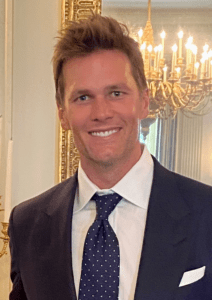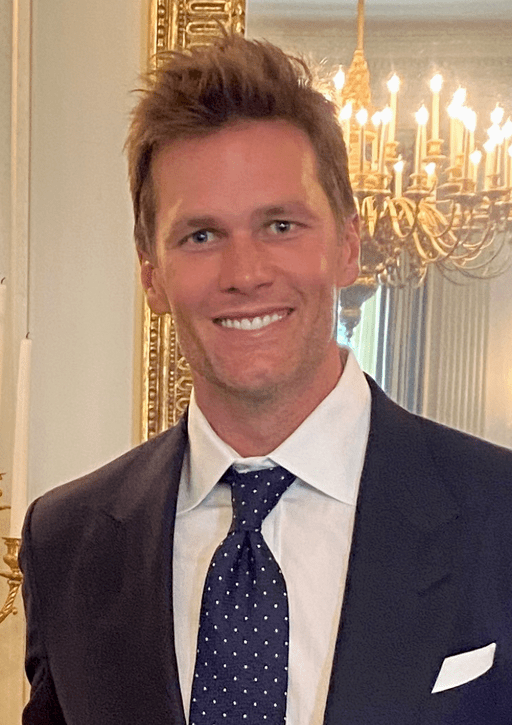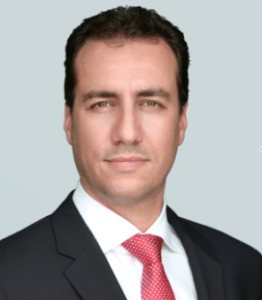Despite his illustrious career in the National Football League, the United States Patent and Trademark Office (USPTO) issued an office action on Patriots quarterback Tom Brady’s federal trademark application for the mark TOM TERRIFIC filed in International Class 016 in connection with collectible trading cards; sports trading cards; posters; and printed photographs, stating the trademark includes false association or a connection with another famous Tom, Tom Seaver, former professional baseball player.
The August 22, 2019 trademark office action for false association trademark from the USPTO must be responded to by February 22, 2020, and must address the issues cited by the Examining Attorney under Section 2(a) for false connection with a famous person, and Section 2(c) for including the name of a living individual without their written consent.
The office action goes on to argue against federal registration of Tom Brady’s TOM TERRIFIC trademark application, stating: “Registration is refused because the applied-for mark consists of or includes matter which may falsely suggest a connection with Tom Seaver. Although Tom Seaver is not connected with the goods provided by the applicant under the applied-for mark, Tom Seaver is so well-known that consumers would presume a connection.”
The False Association Trademark Office Action
Under the Trademark Act the registration of a mark that “consists of or comprises matter that may falsely suggest a connection with persons, institutions, beliefs, or national symbols” is prohibited. In re Pedersen, 109 USPQ2d 1185, 1188 (TTAB 2013). To establish that an applied-for mark falsely suggests a connection with a person or an institution, the following is required:
(1) The mark sought to be registered is the same as, or a close approximation of, the name or identity previously used by another person or institution.
(2) The mark would be recognized as such, in that it points uniquely and unmistakably to that person or institution.
(3) The person or institution identified in the mark is not connected with the goods sold or services performed by the applicant under the mark.
(4) The fame or reputation of the named person or institution is of such a nature that a connection with such person or institution would be presumed when the applicant’s mark is used on its goods.
In this case, TOM TERRIFIC makes an association with former American baseball player Tom Seaver. The term at issue need not be the actual, legal name of the party falsely associated with applicant’s mark to be unregistrable. In addition, the nickname TOM TERRIFIC points uniquely and unmistakably to Tom Seaver, and the fame or reputation of Tom Seaver as “Tom Terrific” is such that a connection between Mr. Seaver and the applied-for goods would be presumed. If applicant’s goods are of a type that the named person or institution sells or uses, and the named party is sufficiently famous, then it may be inferred that purchasers of the goods would be misled into making a false connection of sponsorship, approval, support or the like with the named party.
When entrepreneurs, technology startups and other brand owners want to select and adopt a new trademark, and file a trademark application in the USPTO for federal registration and protection, consideration of whether the mark is likely to create an false association trademark with a famous person is important. Unlike likelihood of confusion issues, where a new trademark application will be refused if it conflicts with an existing trademark, a Section 2(a) refusal for false connection does not need another trademark to create the conflict, and the mere public awareness or connection that the public makes between a term and a famous person, in this case, the public’s association of TOM TERRIFIC with Tom Seaver, not Tom Brady, creates an obstruction to federal registration which must be overcome, usually only with consent, or a cogent argument against the false association trademark rejection. Consultation with an experienced trademark attorney who is familiar with celebrity rights and right of publicity issues in the United States can help analyze trademark before selection and widespread adoption, and before filing in the USPTO for federal registration so as to potentially avoid conflicts ahead of time.
How to Avoid False Association Trademark Office Action
When entrepreneurs, technology startups, and other brand owners seek to select and adopt a new trademark, the process involves more than just creativity and market appeal. Filing a trademark application with the United States Patent and Trademark Office (USPTO) for federal registration and protection requires careful consideration of various legal aspects. One critical factor is ensuring that the chosen mark does not falsely suggest a connection with a famous person or institution. This aspect of trademark law is governed by Section 2(a) of the Trademark Act, which prohibits the registration of marks that may falsely suggest such connections. Consulting with an experienced trademark attorney on the false association trademark office action is essential to navigate these complexities and avoid potential legal conflicts.
Understanding False Association Trademark Rejections
The Legal Framework
Under Section 2(a) of the Trademark Act, the registration of a mark that “consists of or comprises matter that may falsely suggest a connection with persons, institutions, beliefs, or national symbols” is prohibited. This provision aims to prevent the public from being misled into believing that there is an association between the mark and a person or institution when no such connection exists.
To establish that an applied-for mark falsely suggests a connection, the following criteria must be met:
- Similarity of the Mark: The mark sought to be registered must be the same as, or a close approximation of, the name or identity previously used by another person or institution.
- Recognition of the Mark: The mark must be recognized as pointing uniquely and unmistakably to that person or institution.
- Lack of Connection: The person or institution identified in the mark must not be connected with the goods or services provided by the applicant under the mark.
- Fame or Reputation: The fame or reputation of the named person or institution must be such that a connection would be presumed when the applicant’s mark is used on its goods.
Case Study: TOM TERRIFIC
A relevant example is the case involving the nickname “TOM TERRIFIC.” The term was famously associated with former American baseball player Tom Seaver. In re Pedersen, 109 USPQ2d 1185 (TTAB 2013), demonstrates how a term that is not the actual legal name but a widely recognized nickname can still trigger a Section 2(a) refusal. The nickname “TOM TERRIFIC” pointed uniquely to Tom Seaver, and his fame was such that the public would presume a connection between the mark and Tom Seaver when used on the applicant’s goods. This presumption creates an obstruction to federal registration that must be overcome, typically with consent from the named person or a convincing argument against the association.

The Implications for Entrepreneurs and Startups
Importance of Thorough Research
For entrepreneurs and startups, conducting thorough research before selecting a trademark is vital. This research should include not only searching existing trademarks but also considering public associations and the fame of individuals and institutions. A mark that might seem innovative and appealing could inadvertently suggest a false connection, leading to legal challenges and the potential refusal of the trademark application.
Consultation with a Trademark Attorney
Consulting with an experienced trademark attorney who understands celebrity rights and right of publicity issues can help prevent such conflicts. A trademark attorney can:
- Analyze Potential Conflicts: Assess whether the chosen mark could be perceived as falsely suggesting a connection with a famous person or institution.
- Conduct Comprehensive Searches: Perform searches that go beyond the USPTO database, including public perception and media references.
- Provide Legal Advice: Offer advice on how to structure arguments or obtain consent from the named party to overcome potential refusals.
- Guide Through the Application Process: Assist in preparing and filing the trademark application, ensuring all legal requirements are met.
Avoiding False Association Trademarks: Practical Tips
Selecting a Unique Trademark
Choosing a unique and distinctive trademark is the first step in avoiding false association issues. Marks that are arbitrary or fanciful are less likely to be confused with existing names or identities.
Considering Public Perception
Understanding how the public perceives a term is crucial. This involves considering popular culture, media coverage, and the general public’s awareness of famous names and institutions. For example, a term closely associated with a well-known celebrity should be avoided unless there is a clear and lawful connection.
Preparing for False Association Trademark Objections
Even with thorough preparation, objections may still arise. Being prepared to address these objections with well-crafted arguments or obtaining the necessary consents can help in navigating the trademark application process successfully.
The Value of Professional Trademark Guidance
Navigating the complexities of trademark law, especially concerning false associations with famous names and institutions, requires careful consideration and expertise. Entrepreneurs and startups must prioritize this aspect during the trademark selection process to avoid potential legal hurdles and ensure a smooth registration process.
At L.A. Tech and Media Law Firm, our experienced trademark attorneys specialize in helping clients analyze and select trademarks that are not only marketable but also legally sound. Contact us today for a consultation and ensure your brand is protected and compliant with all legal requirements.


